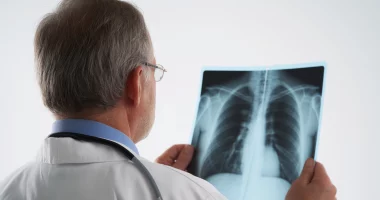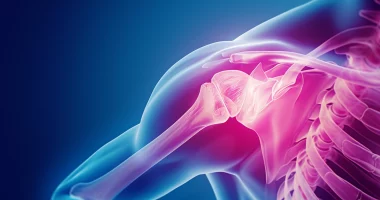Gallbladder polyp
Gallbladder polyps are tumor-like growths of the mucous membrane of the gallbladder. They are predominantly benign, but some types of them are prone to malignancy – they can transform into gallbladder cancer. That is why patients with diagnosed polyps need active dynamic monitoring or surgical removal of the bladder together with the neoplasms contained in it. This approach will help to avoid the development of complications and save the patient’s life.
Prevalence and risk factors of gallbladder polyps
The prevalence of gallbladder polyps ranges from 4.3 to 6.9%; in men, they are found slightly more often than in women. The majority of patients are over the age of 35-40 years. This condition is uncommon among children.
In recent decades, there has been a significant increase in the diagnosis of gallbladder polyps, likely attributable to advancements in diagnostic technology and its expanded accessibility across various population groups.
The likelihood of developing gallbladder polyps increases with certain conditions, including:
- Gallstones
- Cholecystitis
- Cholangitis
- Being aged 50 or older
- Hepatitis B
- Elevated cholesterol levels
- Familial Adenomatous Polyposis (FAP)
- Peutz-Jeghers Syndrome
Gallbladder Polyps Classification
The following types of gallbladder polyps are distinguished
- Cholesterol Polyps (Pseudopolyps): These form due to cholesterolosis, a benign condition where excess cholesterol lipids gather and adhere to the gallbladder’s wall, creating polyps.
- Inflammatory Polyps: This type results from scar tissue linked to the gallbladder wall’s chronic inflammation, known as cholecystitis.
- Adenomas are benign tumors made of cells similar to those lining the biliary tract, the pathway connecting the gallbladder to other organs. They have a .5% chance of turning cancerous.
- Adenomyomatosis: This condition involves the unusual growth of the gallbladder’s lining, leading to cysts within the gallbladder wall. The cause is unknown, but it is not considered harmful.
- Malignant Polyps: Typically presenting as adenocarcinoma, this is the most prevalent form of cancer affecting the internal organs.
Symptoms of Gallbladder polyps
Typically, gallbladder polyps do not cause any symptoms or discomfort to the patient. Occasionally, both men and women may experience the sole symptom of sporadic, dull pain in the right subcostal area, unrelated to food intake. This pain may become sharp following dietary indiscretions or intense physical activity, and when situated near the gallbladder’s neck, it can mimic biliary colic with attack-like episodes.
Additional indicators of longstanding gallbladder polyps include:
- Bitter taste in the mouth, especially noticeable in the morning
- Bitter belching
- Nausea
- Bile in vomit
- Loss of appetite
- General weakness and quick onset of fatigue
- Elevated body temperature
Causes of Gallbladder polyps
Polyps in the gallbladder occur when its mucous membrane is exposed to several causes, among them:
- genetic predisposition (intrauterine mutations of genes arising under the influence of unfavorable factors);
- chronic inflammatory processes, concrements in the gallbladder and bile ducts;
- bladder neck obstruction, which disrupts the normal passage of bile;
- biliary dyskinesia;
- helminthic diseases;
- irregular, unbalanced diet, abuse of fatty, cholesterol-containing foods (eggs, butter, cream, cheese, fatty meat).
Diagnosis of Gallbladder polyps
It is difficult to suspect a gallbladder polyp based on the patient’s complaints, anamnesis, and objective examination – the disease does not manifest itself by any pathognomonic symptoms peculiar only to it. In the presence of long-term complaints from the biliary tract, the patient will be recommended examination, which will help to detect overgrowths of the mucous membrane of the bladder.
- Ultrasound is a straightforward, widely accessible, yet remarkably informative technique. It can reveal elongated or round formations with distinct outlines on either a thin or broad stalk along the organ’s wall. In cases of inflammation, it also shows thickening and swelling of the bladder walls. However, polyps smaller than 5 mm in length are not detectable via ultrasound.
- Endoscopic Retrograde Cholangiopancreatography (ERCP)
- Duodenal probing assesses the function of the gallbladder and examines the composition of the bile taken
- Bile examination helps to diagnose inflammatory processes in the bile, to determine the type of bacteria that caused it and their sensitivity to antibiotics
- Histologic study when tissue removed together with the gallbladder polyp is necessarily sent to the study of its morphologic composition to exclude a malignant process);
- In complex diagnostic scenarios, magnetic resonance imaging (MRI) provides the most precise characterization of the neoplasm, offering detailed insights into its nature.
- In a complete blood count, indicators of inflammation may be identified. Biochemical tests can reveal elevated levels of bilirubin, AST (aspartate aminotransferase), and ALT (alanine aminotransferase), signaling liver and gallbladder dysfunction.
Gallbladder polyp treatment
Some types of gallbladder polyps do not need treatment, requiring only regular monitoring in dynamics. As a rule, this applies to single formations less than 10 mm in size.
With cholesterol polyps of less than five pieces and sizes less than 10 mm, you can try to cope with conservative methods.
Conservative treatment
- diet (fractional feeding with a daily diet containing 50-55% carbohydrates, 30% fats, 15-20% proteins, minimizing the use of foods rich in animal fats, cholesterol);
- ursodeoxycholic acid dissolves the polyp
- antispasmodics relieve pain
- antibiotics are administered when there is evidence of inflammation caused by microbial infection.
- enzymes to normalize digestive processes
- statins are recommended to correct the blood lipid profile
Surgical treatment
The main method of treatment of gallbladder polyps is surgical intervention in the scope of cholecystectomy (removal of the bladder together with polyps). Indications for the surgery are the following:
- Multiple formations over 10 mm in size.
- Polyps with a broad base.
- Location near the gallbladder neck or duct.
- Widespread polyps covering all organ walls.
- Polyps associated with gallstones.
- Rapid growth, increasing by 2 mm or more annually.
- Pronounced symptoms of the condition.
- Age over 50 years.
- Potential for malignancy.
Depending on the clinical situation, the operation can be performed by different methods:
- Laparoscopic cholecystectomy is performed through three or four puncture wounds in the abdominal wall. Laparoscopic cholecystectomy is available in more than 595 clinics worldwide (https://doctor.global/results/procedures/laparoscopic-cholecystectomy). For example, laparoscopic surgical removal of gallbladder polyps or laparoscopic cholecystectomy can be performed in 9 clinics across Israel for an approximate price of $14 K (https://doctor.global/results/asia/israel/all-cities/all-specializations/procedures/laparoscopic-cholecystectomy).
- SILS-cholecystectomy (the operation is performed through a single incision in the navel area)
- Open cholecystectomy (in severe cases, in case of complications)
Gallbladder polyp prevention
To lower the chances of developing Gallbladder polyps, it is advised to:
- Maintain an active lifestyle.
- Follow a healthy diet, limiting fatty, spicy, fried foods and alcohol.
- Promptly diagnose and properly treat digestive organ diseases.
- Keep your weight within a healthy range.




